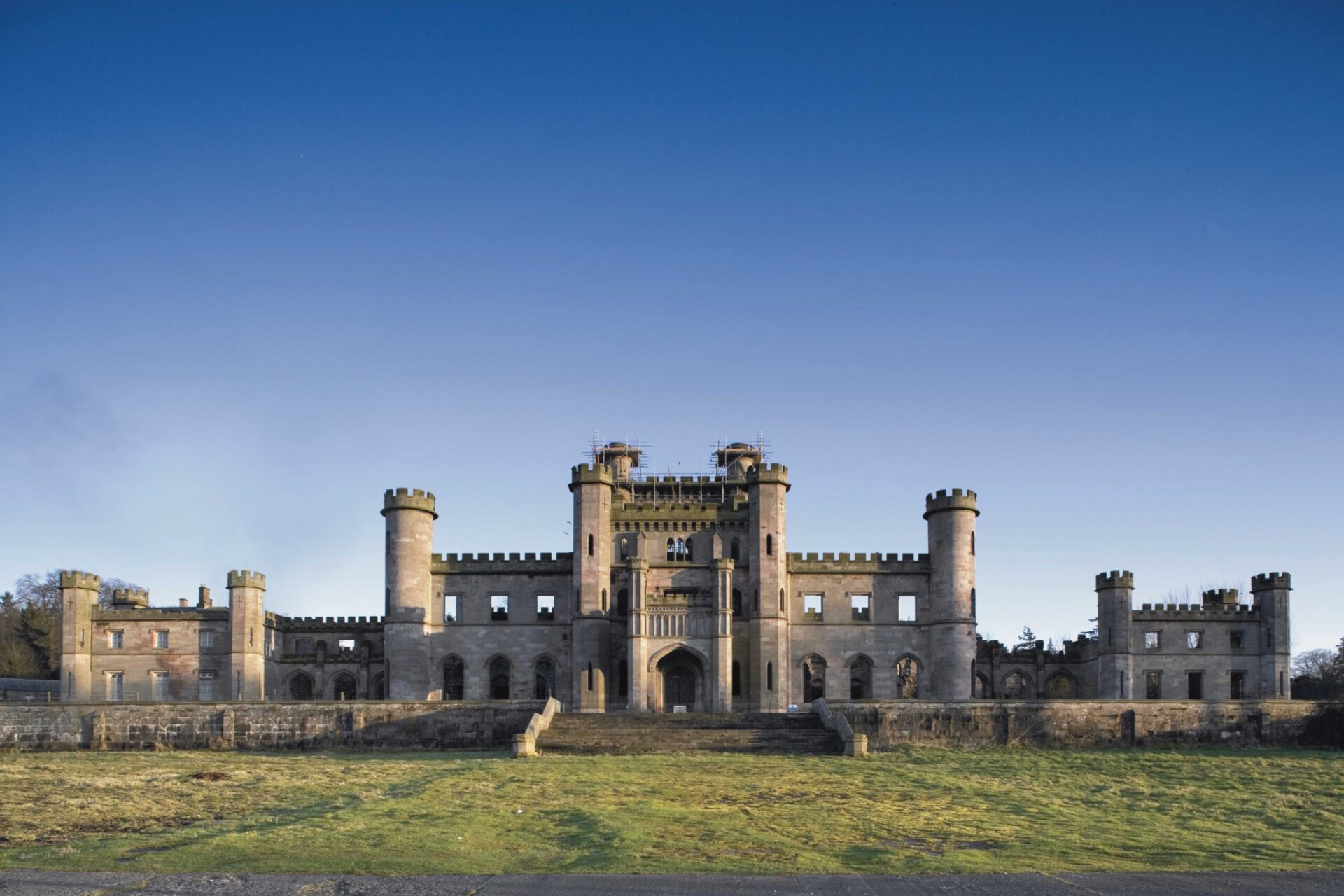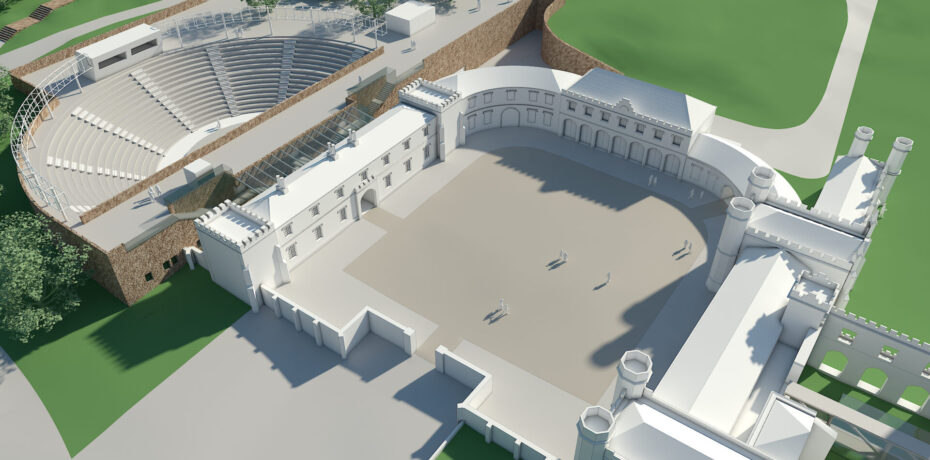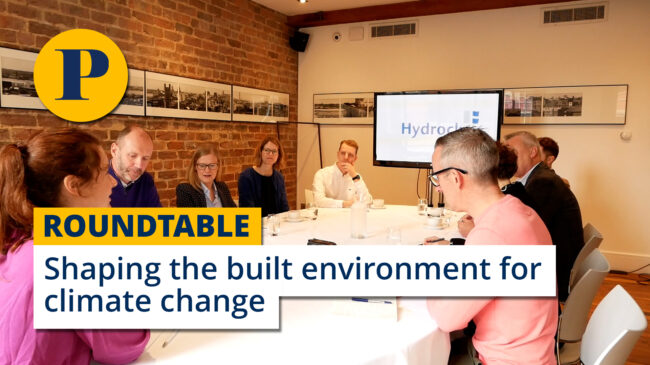Keeping the castle
Janet Reeder meets Jim Lowther to hear his ambitious plans to restore the majestic family castle in Cumbria and bring it into modern use
Jim Lowther's £80m project to transform an imposing Cumbrian ruin into an international cultural destination is edging slowly forwards towards reality.
If successful, the magnificent Lowther Castle, near Penrith, and its atmospheric grounds will be restored and redeveloped into an arts and educational centre, together with 1,200-seat amphitheatre and 120 acres of gardens. The boost to the regeneration of the region would be significant, with an estimated 750,000 visitors attracted a year and 2,000 jobs created.
In November the Lowther Castle & Gardens Trust will learn whether it has won the £25m cash injection from a £140m Big Lottery Living Landmarks pot that will enable the £30m first phase to go ahead. A full-time project manager, David Horton Fawkes, was appointed recently by the Lowther Castle & Gardens Trust. Horton Fawkes previously managed the Grade I-listed Althorp Hotel in Northampton, and is a former a director of Brand Architects in London.
The project is competing against 23 other Living Landmarks projects around the country for the Big Lottery cash. However, it also aims to win further backing from Heritage Lottery Fund capital grants, Cumbria Vision, the European Leonardo Fund and other sources such as US-based educational fund FAD.
Jim Lowther, trustee and brother to the eighth Earl of Lonsdale, is part of the family that has owned the site for 1,000 years. He explains his hopes for the project: "Our ambition is to help regenerate the Cumbrian economy and be part of making the region a centre of creativity in the UK, by providing facilities in a place for artistic development – of the visual arts, performing arts, indoor and outdoors and do it in a totally unique way in a spiritual place which has a history that is absolutely invaluable in the UK."
"And we will do it using the beautiful landscape of the Lake District as an inspiration."
 How this translates in building terms is the conservation of a romantic and picturesque ruin, in a 120-acre naturalistic landscaped garden, which will include a gallery for sculpture, there will be the amphitheatre and an indoor, underground gallery, as well as new lifts and walkways so that visitors can enjoy panoramic views of the estate and the Lake District. Designs were drawn up by Sheppard Robson architects.
How this translates in building terms is the conservation of a romantic and picturesque ruin, in a 120-acre naturalistic landscaped garden, which will include a gallery for sculpture, there will be the amphitheatre and an indoor, underground gallery, as well as new lifts and walkways so that visitors can enjoy panoramic views of the estate and the Lake District. Designs were drawn up by Sheppard Robson architects.
"The Living Landmarks funding does not relate to the consolidation of the castle ruins", says Lowther. "But to the gallery elements, visitor centre and grounds as well as educational components – for example some classrooms will be built. There will also be an environmental energy element. There will be the world's first wood fired tri-generation plant designed too as a major cultural attraction."
If the Living Lottery bid is unsuccessful contingency plans are in place. Lowther explains that the site has sufficient flexibility for the various phases to be switched around and potential resources may result from the applications for funding from other agencies.
The castle itself deserves attention. A favourite of the poet Wordsworth, the building, designed by British Museum architect Sir Robert Smirke, dates back to 1804-1811. However it is situated on what has been a fortification site since the 12th Century and shares a long association with the Lowther family.
"The gardens are about a 1,000 years old, which is the amount of time my family has owned the site," says Lowther.
"But more than that there is a unique archive going back to 920 AD which contains a massive amount of political, social an economic family history not only of the North West but the UK. There are currently 2,300 trunks housed in Carlisle Castle, so that provides the historical keystone to everything which we do in the project. It's not just about the Lowther family, but about the life and times of Cumbria since well before the Industrial Revolution."
However, this is not a restoration project, according to Lowther. "What we are trying to do is entirely modernist. Whilst we're taking a historic building and 'fixing' it, we are using it to move forward. This is not a desire to reinterpret history, totally not. It's about creating something new."
In 2000, the Lowther Estate and English Heritage jointly commissioned a team of historians, landscapers, architects and engineers to research the background and history to the site of the Castle and its grounds. This work, which took nearly a year, resulted in the Lowther Castle & Garden Conservation Plan which now informs the detailed design concepts for the project.
Emergency works to prevent the possible collapse of the staircase tower and the start of a long-term plan to consolidate the ruin were enabled by an English Heritage grant.
And earlier this year a £2.4m grant from Cumbria Vision together with another £250,000 from Lottery Living Landmarks, was allocated to develop the project.
Much homework has been done and if the Living Landmarks bid is successful the real test of this ambitious concept cannot come quickly enough.




